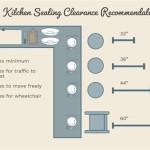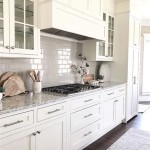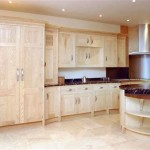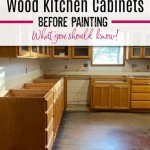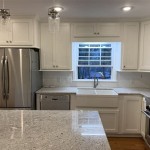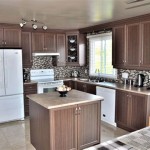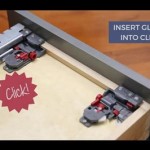What Is the Best Material for Making Kitchen Cabinets?
Choosing the right material for kitchen cabinets is a crucial decision that can significantly impact the look, durability, and overall cost of your kitchen renovation. With a wide array of materials available, each possessing unique properties and aesthetic appeal, it’s essential to consider your budget, desired style, and functional needs before making a final choice. This article explores some of the most popular cabinet materials, highlighting their strengths, weaknesses, and ideal applications to help you make an informed decision.
Wood
Wood remains a timeless classic in kitchen cabinet construction, offering unparalleled beauty, durability, and versatility. It’s available in an extensive range of species, each with distinct grain patterns, colors, and hardness levels.
Types of Wood
Popular choices include:
- Oak: A durable, strong, and readily available option with a distinctive grain pattern. It's known for its ability to withstand wear and tear, making it ideal for high-traffic areas.
- Maple: Renowned for its fine, tight grain, maple boasts a smooth surface that's less susceptible to scratches. It’s often favored for its sleek, contemporary look and natural resistance to moisture.
- Cherry: With its rich reddish hue, cherry wood exudes warmth and elegance. It ages gracefully, developing a deeper, darker tone over time. However, cherry can be susceptible to scratches and dents.
- Walnut: Known for its distinctive, intricate grain pattern and dark brown color, walnut is a luxurious choice. It's durable and hard, but its price point can be higher.
- Alder: This softwood offers a more affordable alternative to hardwoods. It’s known for its warm, honey-colored tones and is a great choice for painted cabinets.
Pros of Wood Cabinets
- Natural beauty: Wood's unique grain patterns and warm tones add a touch of elegance and character to any kitchen.
- Durability: When properly cared for, wood cabinets can last for generations, making them a sound investment.
- Versatility: Wood can be stained, painted, or left natural, providing endless customization options.
- Repairable: Unlike other materials, minor scratches and dents in wood can be easily repaired.
Cons of Wood Cabinets
- Higher cost: Wood cabinets are generally more expensive than other materials.
- Susceptibility to moisture: Wood can be susceptible to warping, swelling, and rotting if exposed to excessive moisture.
- Maintenance: Wood cabinets require regular cleaning and occasional refinishing to maintain their appearance.
Laminate
Laminate is a popular choice for kitchen cabinets due to its affordability, durability, and wide range of colors and patterns. It consists of a decorative paper layer laminated onto a core material like particleboard or MDF (Medium-Density Fiberboard).
Pros of Laminate Cabinets
- Cost-effective: Laminate cabinets are significantly more affordable than wood cabinets, making them a budget-friendly option.
- Durability: Laminate is resistant to scratches, stains, and moisture, making it a practical choice for busy kitchens.
- Easy to clean: Laminate surfaces are smooth and non-porous, making them easy to wipe down.
- Wide range of styles: Laminate is available in a vast array of colors, patterns, and finishes, allowing for a personalized look.
Cons of Laminate Cabinets
- Not as durable as wood: While laminate is durable, it can be prone to chipping and denting, especially if exposed to impacts.
- Limited customization: While laminate offers a wide selection, the customization options are limited compared to wood.
- Less natural appeal: Laminate lacks the warmth and character of natural wood.
Thermofoil
Thermofoil cabinets are a popular alternative to traditional wood cabinets, offering a sleek, modern look at a more affordable price. The process involves applying a thin layer of vinyl laminate to a substrate like MDF or particleboard, which is then heated and pressed under high pressure for a smooth, durable finish.
Pros of Thermofoil Cabinets
- Affordable: Thermofoil cabinets are generally less expensive than wood or laminate cabinets.
- Moisture-resistant: Thermofoil's vinyl coating makes it resistant to moisture, making it suitable for kitchens with high humidity levels.
- Easy to clean: The smooth, non-porous surface of thermofoil is easy to wipe down and maintain.
- Wide range of colors and finishes: Thermofoil offers a variety of colors, patterns, and finishes, including wood-grain textures.
Cons of Thermofoil Cabinets
- Less durable than wood: Thermofoil is susceptible to scratches, dents, and warping, especially at the edges.
- Limited customization: While thermofoil offers color and finish options, it lacks the versatility of wood for customization.
- Artificial appearance: Thermofoil lacks the natural beauty and warmth of wood.
Other Materials
While wood, laminate, and thermofoil are the most common cabinet materials, other options are emerging in the market. These include:
- Acrylic: Acrylic cabinets offer a high-gloss, sleek finish, making them a popular choice for modern kitchens. They are moisture-resistant, easy to clean, and available in various colors. However, acrylic is more expensive than laminate and can be susceptible to scratches.
- Metal: Metal cabinets are a durable and stylish option, often used in industrial-style kitchens. They are resistant to moisture, heat, and scratches, making them a practical choice for high-traffic areas. However, metal can be prone to dents and scratches.
- Glass: Glass cabinets are a modern and elegant option, offering a sleek, minimalist look. They are often used for display purposes, showcasing beautiful dishes or glassware. However, glass cabinets can be fragile and require careful cleaning.
The best material for kitchen cabinets depends on your individual needs and preferences. Consider your budget, desired style, and functional requirements before making a decision. Consulting with a kitchen designer or contractor can help you choose the right material for your specific project.

7 Best Kitchen Cabinet Materials To Protect You From Poor Quality Horrors

9 Best Cabinet Materials How To Choose Quality Cabinetry Vevano

How To Choose The Right Kitchen Cabinet Materials For Your Project Architizer Journal

9 Best Kitchen Cabinet Materials To Choose From Iproperty Com My

A Guide To Materials And Finishes For Kitchen Designcafe
9 Best Cabinet Materials How To Choose Quality Cabinetry Vevano

7 Best Kitchen Cabinet Materials To Protect You From Poor Quality Horrors

9 Best Kitchen Cabinet Materials To Choose From Iproperty Com My

How To Choose The Best Kitchen Cabinet Design In Singapore
9 Best Cabinet Materials How To Choose Quality Cabinetry Vevano
Related Posts

